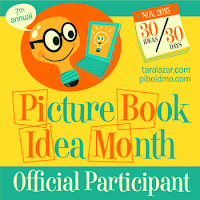December is all about celebrating, and here at The Mitten we love a party! It’s hard to believe this is the last issue of Hugs and Hurrah’s for 2015. Just for fun, I’d thought we’d take a moment and reminisce about all the wonderful 2015 writing news from our Michigan SCBWI members. Here are a few facts based on the Hugs and Hurrahs information I’ve collected for this year:
- YA Contracts - 8
- Short Stories, Poems, Cartoons, Testing Pieces, etc.- 3
- Speaking Engagements/Blog Tours- 5
- Agent Signings-4
- Picture Book Contracts- 13
- Middle Grade Contracts- 2
- Magazine Pieces- 2
- Awards/Degree Completion- 5
- Illustration Contracts- 7
I definitely think those numbers call for a standing ovation, double Woo Hoo and a hearty Hip Hip Hooray!
And now, let’s end this year with a bang and keep the party going with all of your good news from October through December!
Hats off to member Kathleen Vincenz who recently self-published her middle-grade novel, OVER THE FALLS IN A SUITCASE (Squirrels at the Door November 2015). The book was released in November and is available on Amazon. Congratulations Kathleen!
Janet Heller of Portage has been very busy since our last edition of Hugs and Hurrahs. She received a positive book review for her chapter book, THE PASSOVER SURPRISE (Fictive Press 2015) from the Midwest Book Review in October. Janet also had two of her poems, “Inheritance (For Oma)” and “Policing My Apartment,” in Old Northwest Review’s Fall 2015 issue. Janet spent time autographing her books at the Chanukah Bazaar at the Congregation of Moses in Kalamazoo, the Local Writer’s Expo at the Portage District Library, and at Kazoo Books in Kalamazoo in early December. Congratulations on all your hard work Janet!
Illustrator Kirbi Fagan was recently accepted into the Los Angeles Society of Illustrators 54th Annual Exhibition. Kirbi was also featured in Imagine FX magazine as "Artist of the Month,” and had three works of art included in "Infected By Art Volume 3." Way to go Kirbi!
Lori McElrath-Eslick has her own great illustration news! Her art for a magazine publication has been accepted into the 35th Western Spirit Art Show and Sale, a national juried exhibition. The exhibition dates are March 5- April 17, 2016. Lori also illustrated three new e-books for Schoolwide Publishing. They are: Westward to Oregon, How the Cardinal got his Red Feathers, The Girl Who Would Not Listen to Her Elders all written by Patricia Curtis Pfitsch. Congratulations Lori!
PJ Lyons is happy to announce that her rhyming picture book, THANK YOU LORD FOR EVERYTHING (Zonderkidz 2015), was released September 1 and has received some lovely reviews! We’re so proud of you PJ!
Three cheers to our Mitten editor-extraordinaire, Kristin Lenz! Kristin is the winner of the 2015 Helen Sheehan YA Book Prize. Her debut YA novel, The Art of Holding On and Letting Go, will be published by Elephant Rock Books, Fall 2016. So excited for you Kristin!
Neal Levin has been at it again! Neal’s poem "Cavemanners" has been published in the November/December issue of Spider Magazine, and his short story "Messy Messages" has been published in the November 2015 issue of Highlights Magazine for Children! Neal’s poem "My Little Porcupine" was published in the Sep/Oct 2015 issue of Fun For Kidz Magzine, and his poem "Baby Ate a Microchip" has been purchased by a nonprofit educational testing agency for use in a standardized testing project. That’s amazing Neal!
Jean Alicia Elster’s middle-grade novel, Who’s Jim Hines (Wayne State University Press), has been placed on the Southfield Public Library’s Middle School Challenge Battle of the Books List for 2016. Congratulations Jean!
Joseph Miller of Livonia is happy to announce that he recently signed with Nicole Resciniti of the Seymour Agency! Joseph participated in Michelle Hauck and Sharon Chriscoe's PBParty contest and had his picture book, TOO TIRED TO TELL A STORY chosen for the agent round. Seven agents and editors requested the full story and of those Joseph had three offers of representation. So happy for you Joseph!
Wendy Booydegraff is excited about her new picture book, SALAD PIE (Ripple Grove Press 2016). Here is a peak at the cover! Congratulations Wendy!
Barb Rebbeck is thrilled to announce that she has just been chosen to be a featured speaker at the MRA Conference in Detroit in March. We’re so proud of you Barb!
See?! I told you we were ending the year with a BANG! You Michigan kidlit writers are an amazing bunch, and I'm happy we’re on this journey together!
From all of us here at The Mitten- Kristin, Nina and me (Patti)- Happy Holidays and Happy New Year! May your 2016 be filled with bountiful blessing, sweet surprises, peace-a-plenty and loads of love!





































